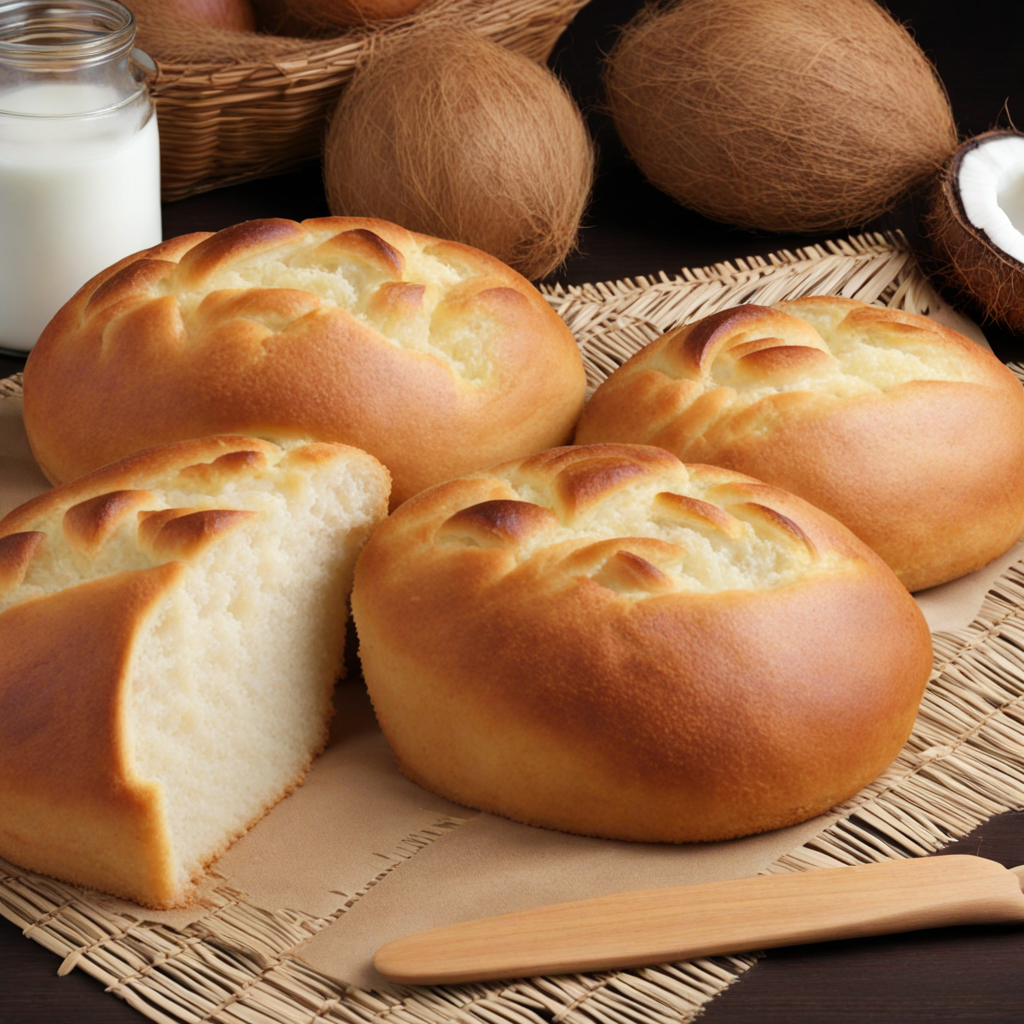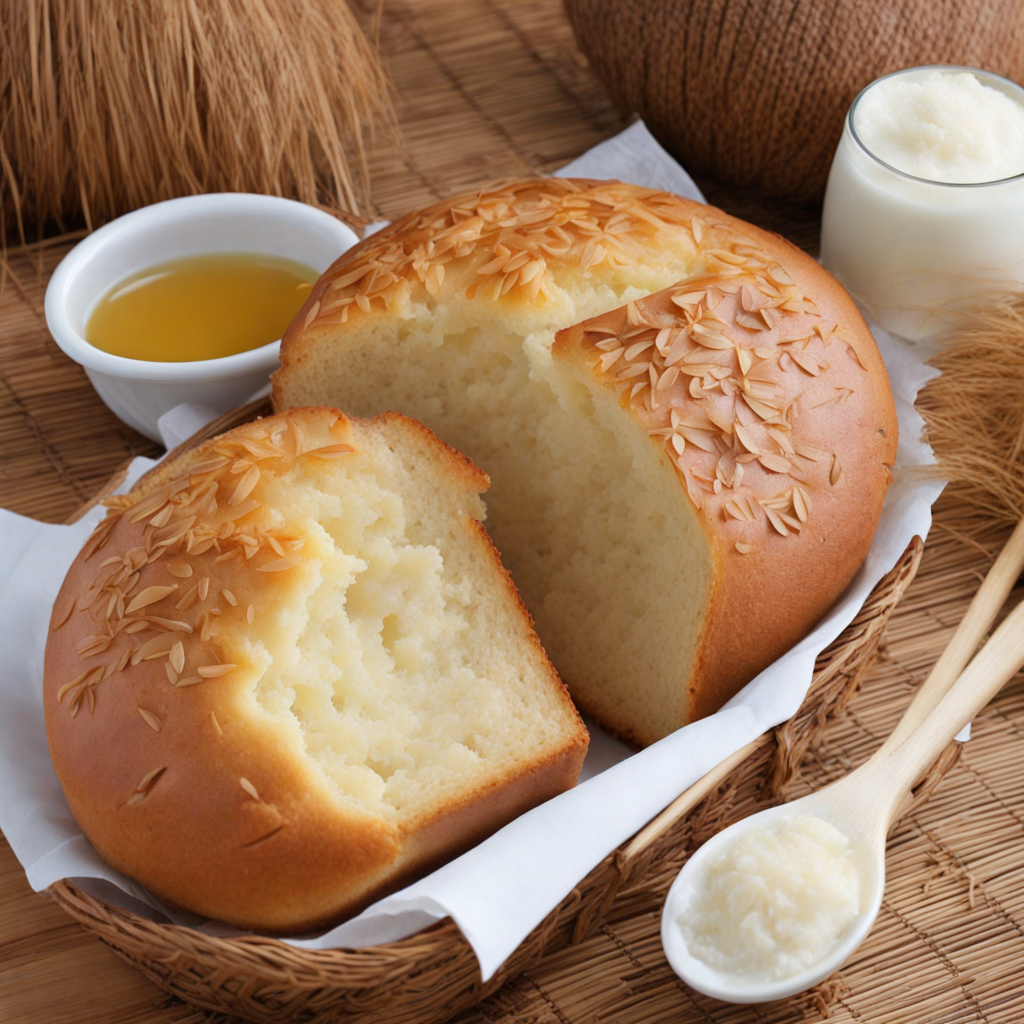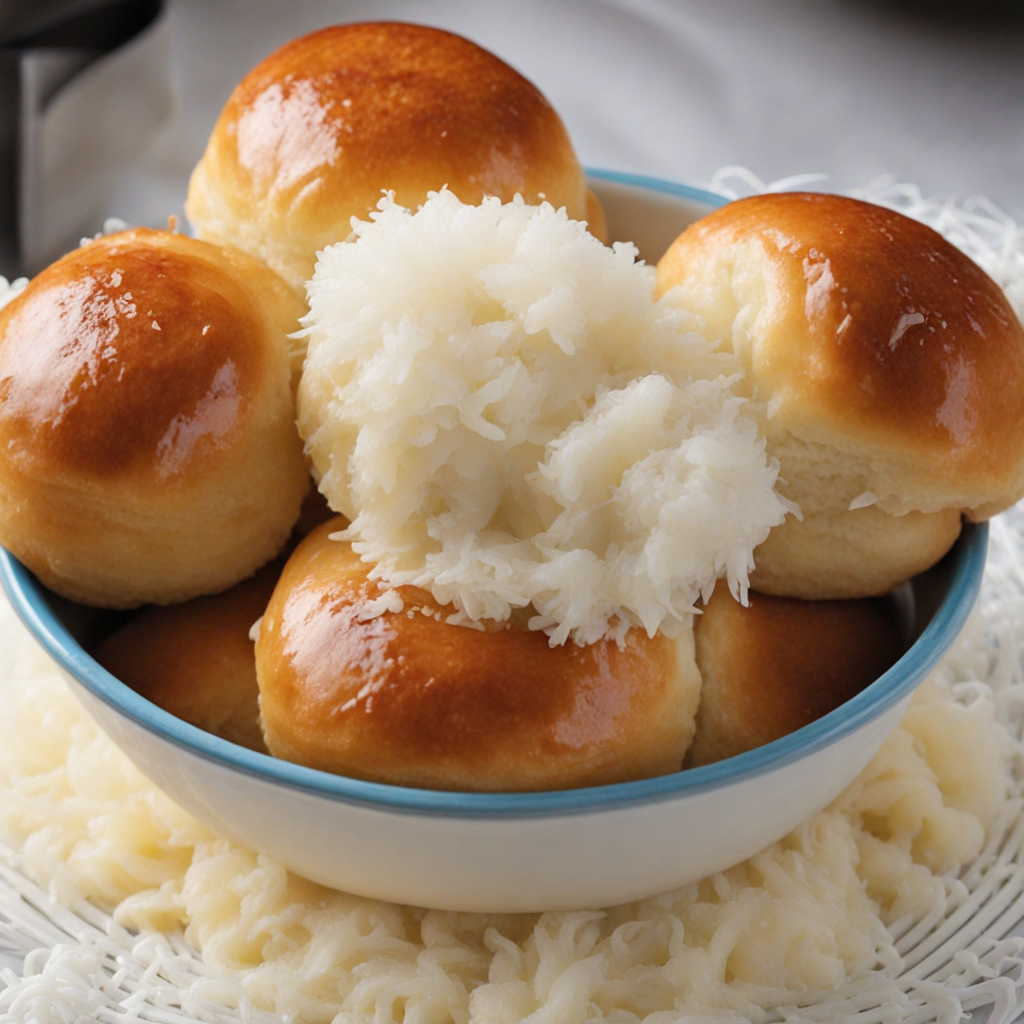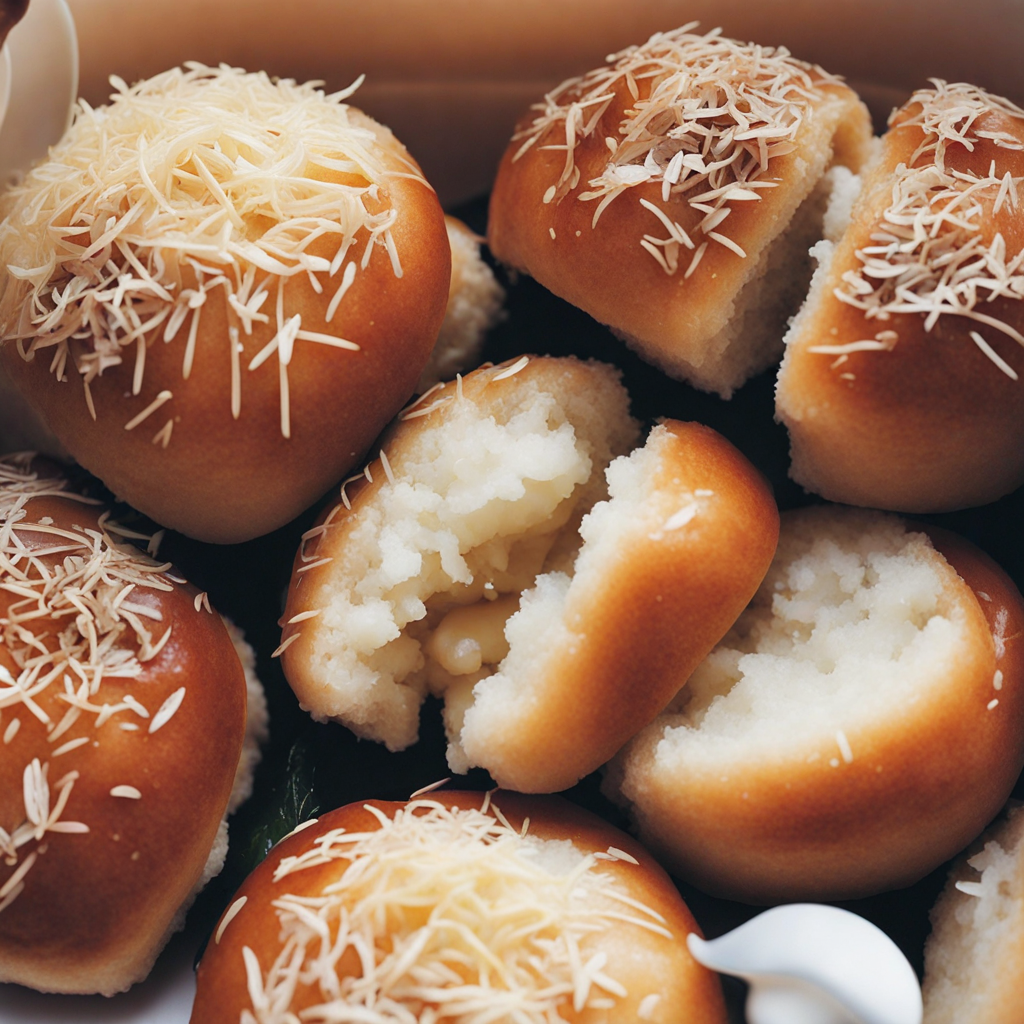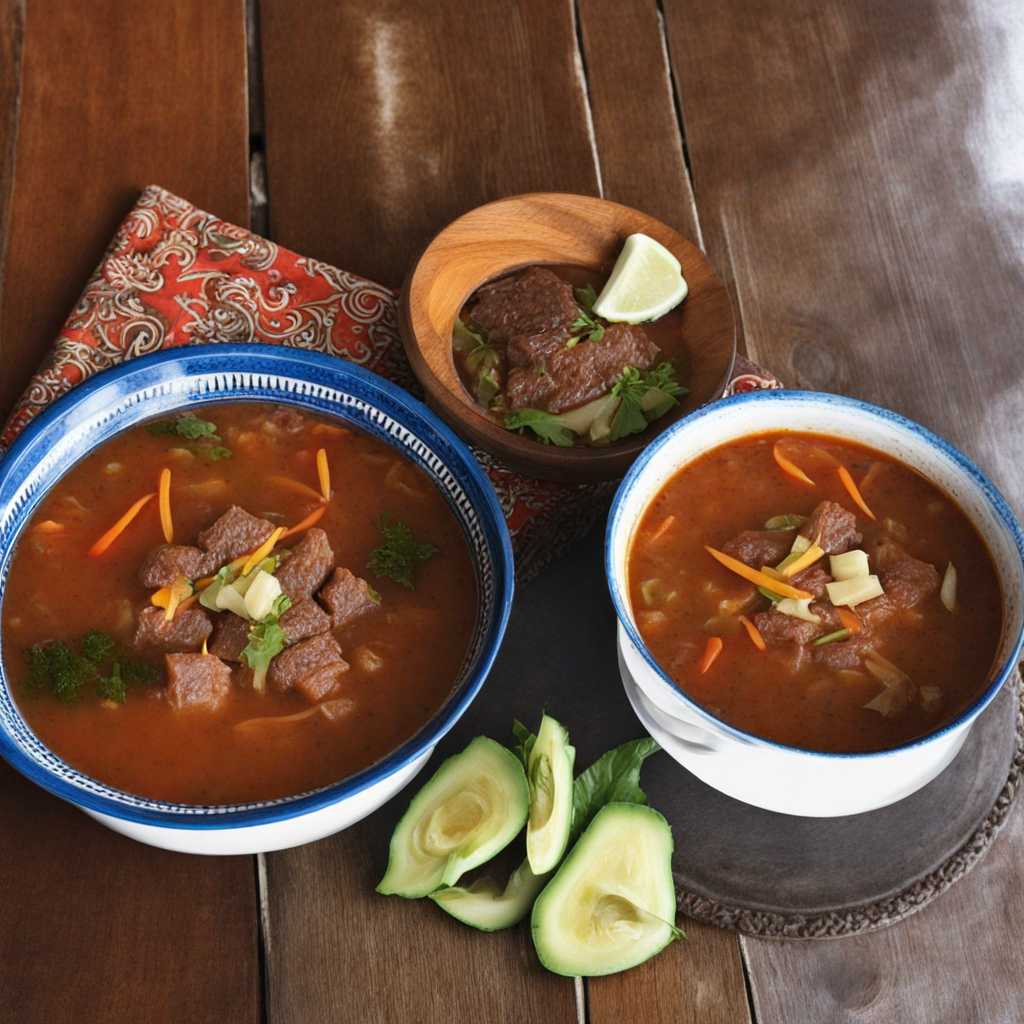Fa'apapa
Fa'apapa is a traditional Samoan bread that embodies the rich culinary heritage of the islands. This delightful treat is often made with just a few simple ingredients, including flour, sugar, coconut milk, and yeast, which come together to create a soft, slightly sweet bread that is both comforting and satisfying. The dough is typically kneaded to a smooth consistency and allowed to rise, resulting in a light and airy texture that melts in your mouth. The addition of coconut milk not only enhances the flavor but also gives the bread a subtle tropical aroma that transports you straight to the shores of Samoa. What sets Fa'apapa apart from other breads is its unique preparation method. Traditionally, the dough is shaped into round loaves and wrapped in banana leaves before being baked in an underground oven, known as an umu. This cooking technique infuses the bread with a smoky flavor and a hint of earthiness, making every bite an experience to savor. The banana leaves also help to retain moisture, ensuring that the bread remains soft and fluffy, while imparting a delicate herbal note that complements the sweetness of the coconut. Fa'apapa is often enjoyed fresh out of the oven, served warm with butter or coconut cream, and can be paired with a variety of dishes, from savory stews to sweet desserts. It is a staple at family gatherings and celebrations, symbolizing togetherness and the sharing of good food. Whether you choose to indulge in it on its own or as part of a larger meal, Fa'apapa promises to introduce your palate to the warm, inviting flavors of Samoan cuisine, making it a delightful addition to your culinary explorations.
How It Became This Dish
The History of Fa'apapa: A Culinary Treasure of Samoa Fa'apapa, a traditional Samoan bread, is more than just a staple food; it is a symbol of cultural identity, community, and the rich culinary heritage of the Samoan people. This delightful bread, often enjoyed during special occasions and gatherings, embodies the essence of Samoan hospitality and the intricate relationship between food and culture. Origins of Fa'apapa The origins of Fa'apapa can be traced back to the arrival of Polynesian navigators in Samoa, over 3,000 years ago. These early settlers brought with them a variety of food practices and ingredients, including the cultivation of taro, yams, and coconuts. The development of Fa'apapa is intrinsically linked to the agricultural practices of these early Samoans, who relied on the fertile volcanic soil of the islands for their sustenance. The word "Fa'apapa" itself means "to bake" in Samoan, and the bread is traditionally made from a simple mixture of flour, coconut cream, sugar, and yeast. While the basic ingredients are straightforward, the method of preparation and the cultural context in which Fa'apapa is enjoyed give it a depth of meaning that transcends its humble components. Cultural Significance In Samoan culture, food is deeply intertwined with social and familial bonds. Fa'apapa is often prepared for significant occasions such as weddings, birthdays, and church gatherings, serving as a focal point for communal feasting. The process of making Fa'apapa is often a communal affair, with family members gathering to prepare the bread together. This not only reinforces family ties but also serves as a way to pass down culinary traditions from one generation to the next. Fa'apapa is traditionally cooked in an underground oven called an "umu," where hot stones are placed over the dough, creating a unique flavor and texture. The method of cooking in an umu is a time-honored practice that connects contemporary Samoans to their ancestors, who relied on this technique for their daily meals. The act of baking Fa'apapa in an umu is often accompanied by songs and stories, further enriching the cultural experience. Development Over Time As Samoa has evolved, so too has the preparation and consumption of Fa'apapa. In the early 20th century, as Western influences began to permeate Samoan society, the ingredients and methods for making Fa'apapa adapted to include more modern conveniences. The introduction of commercial yeast and pre-packaged flour changed the way the bread was made, allowing for quicker preparation times and more consistent results. However, many families still honor traditional methods, using freshly grated coconut and hand-mixed dough. The post-colonial era brought about significant changes in Samoan society, including urbanization and changes in lifestyle. As people moved from rural areas to urban centers, the communal nature of food preparation began to shift. While Fa'apapa remained a beloved dish, its role in everyday life transformed. It became a symbol of nostalgia for many Samoans living abroad, reminding them of home and their cultural roots. In recent years, there has been a resurgence of interest in traditional Samoan foods, including Fa'apapa. This revival is fueled by a growing appreciation for indigenous cuisines and a desire to reconnect with cultural heritage. Community events, food festivals, and cooking classes are now showcasing Fa'apapa, allowing younger generations to learn the art of bread-making and the stories that accompany it. Modern Adaptations Today, Fa'apapa continues to evolve while retaining its traditional roots. Some contemporary versions incorporate various flavors and fillings, such as chocolate, fruit, or spices, reflecting the diverse influences that have permeated Samoan cuisine. These adaptations not only cater to changing tastes but also serve as a bridge between the past and the present, allowing Fa'apapa to remain relevant in a rapidly globalizing world. Moreover, the bread has found its way onto the menus of restaurants outside of Samoa, where chefs pay homage to the dish by incorporating it into fusion cuisine. This exposure has introduced Fa'apapa to a wider audience, allowing people from different backgrounds to appreciate its unique flavors and cultural significance. Conclusion Fa'apapa stands as a testament to the resilience and adaptability of Samoan culture. Its journey from the hands of ancient Polynesian navigators to modern kitchens around the world encapsulates the story of a people who have managed to maintain their identity amidst change. The bread is more than just food; it is a celebration of community, tradition, and the enduring bonds that tie Samoans to their heritage. As Fa'apapa continues to be made, shared, and enjoyed, it will undoubtedly remain a cherished part of Samoan life, inviting both locals and visitors to partake in the rich tapestry of its history. In every loaf, there is a story—a narrative of ancestry, belonging, and the timeless beauty of sharing a meal with loved ones. Whether enjoyed fresh from the umu or adapted for modern palates, Fa'apapa will always hold a special place in the hearts of those who call Samoa home.
You may like
Discover local flavors from Samoa


